When you think of Russia, you might think about fur hats, cold winters, and vodka. However, Russia also has a hidden gem — or more aptly, a hidden egg. Meet the Pavlovskaya chicken that is native to Russia.
This is an extremely rare breed that is mainly ornamental in nature. With a proud and elegant strut, beautiful colors including gold and silver, and a gentle disposition, the Pavlovskaya chicken is rare and exotic.
It’s not easy to find many Pavlovskaya chickens, but those around are bred to the highest standards, making them a perfect choice for breeders who want a moderate challenge. But just exactly what is a Pavlovskaya chicken and why are there so few of them?
| Pavlovskaya Chicken Overview | |
| Attribute | Information |
| Purpose | Dual Purpose |
| Egg Color | White or cream-colored |
| Egg Size | Medium |
| Broody | Yes |
| Heat Tolerance | Yes |
| Cold Tolerance | Yes |
| Comb Type | Rose Comb |
| Egg Production | 70-90 eggs/year |
| Chicken Skin Color | White, Silver, Golden, Black with a white crest, Grey with a white crest |
| Life Span | 6-8 years |
| Adult Weight (Hen) | 4.5 lbs |
| Adult Weight (Rooster) | 6 lbs |
| Backyard Friendly | 4/5 |
Where Did the Pavlovskaya Chicken Come From?
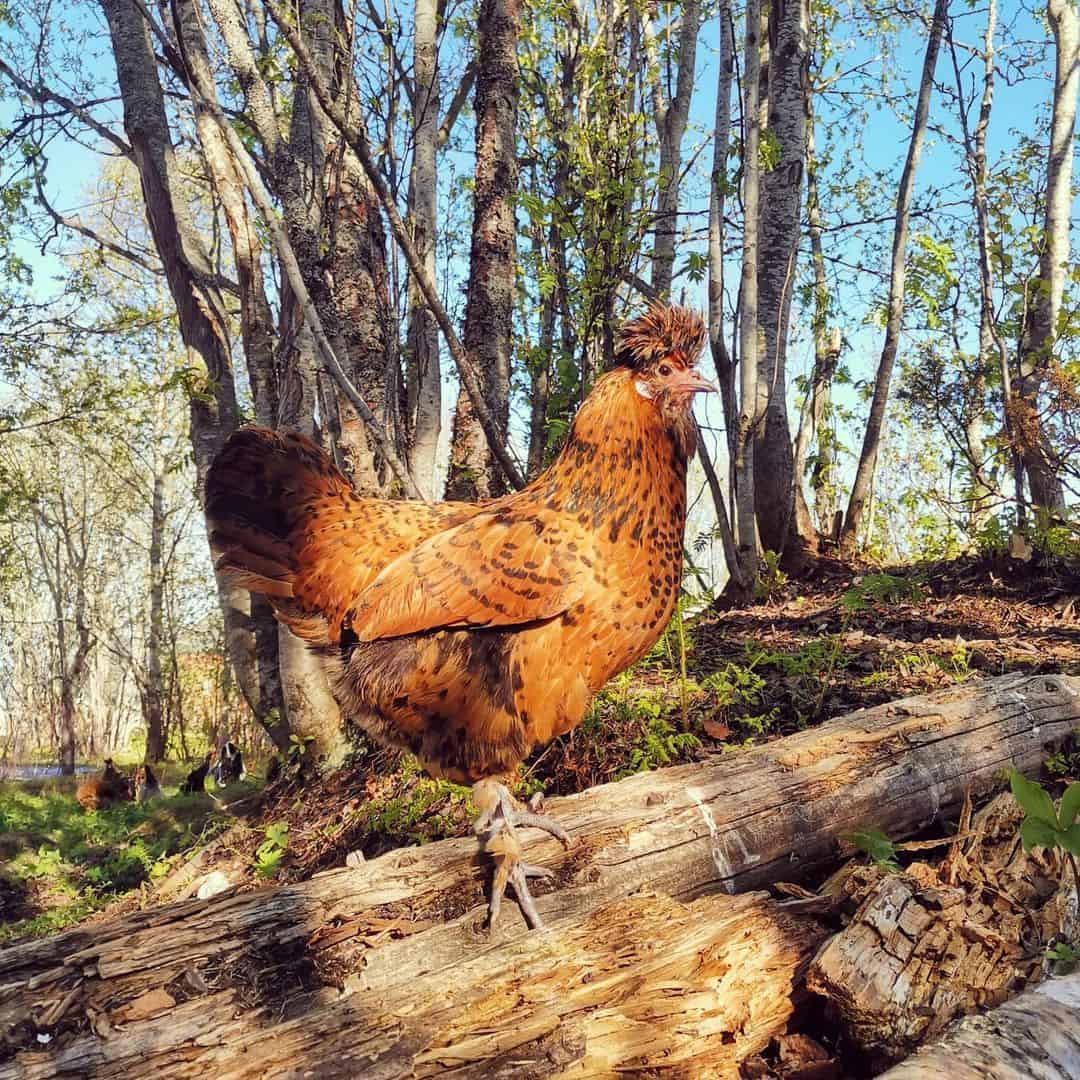
Pavlovskaya chickens have an interesting history. A Russian myth places them as stemming from the union of a grouse and a chicken which lead to their feet having featherings similar to that of a grouse.
Another myth names their ancestors as Catherine II of Russia’s royal poultry yard hens.
Are They Really Russian?
In truth, this breed comes from Russia as Russian scientist P. Pallas first documented it in the 18th century. He described a breed of chickens called Pavlovskaya, named after the place of origin.
A German poultry breeder also considered them as the forebears of crested hens, as well as one of the oldest crested breeds.
The Pavlovskaya chickens came from the village of Pavlovo, located about 200 miles east of Moscow next to the Oka River. Interestingly, the village is known for its annual tradition of holding goose-fighting contests.
By the 1800s, the breed was gaining popularity. People often labeled it as the highest standard of beauty in chickens and regarded it as Russia’s national chicken breed. They entered it into contests such as the 1906 Russian Agricultural and Trade Poultry Exhibition
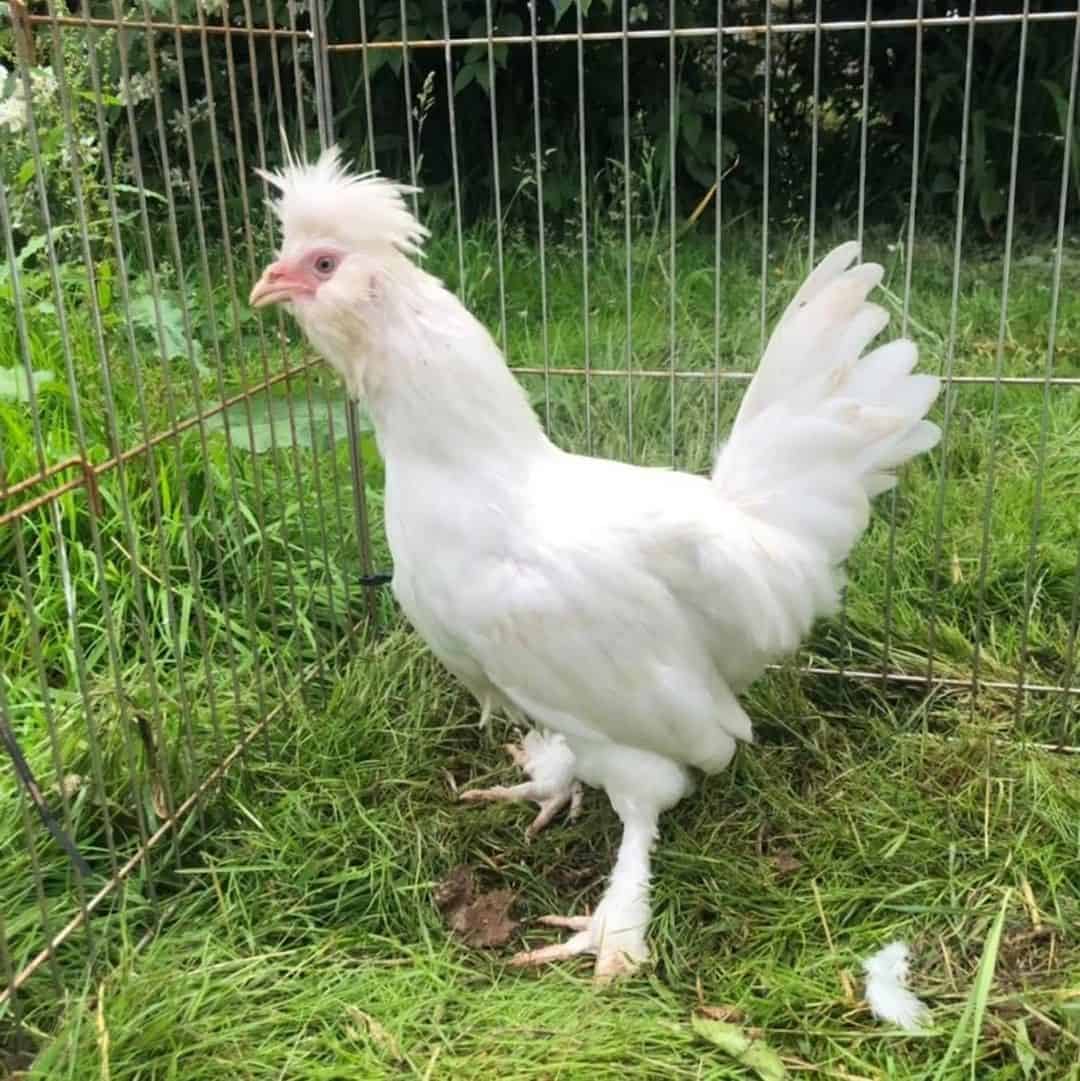
Despite its rising popularity, the breed nearly became extinct in the late 1800s when foreign chicken breeds became more popular. By 1899, people found no traces even of the breed in Moscow and even Pavlovo where it used to be widely bred.
By the early 1900s, some places still bred the elusive Pavlovskaya chicken. However, their numbers dwindled again until 1990, when only two authentic Pavlovskaya roosters remained. Moreover, one of them was infertile.
To save the breed, farmers cross-bred the fertile rooster with genetically similar hens. Farmers also bred back the offspring with the father, saving the authenticity of the Pavlovskaya breed.
To this day, many chicken enthusiasts go after this rare breed. Their rarity only adds to their appeal. Even in Russia, there are only a few Pavlovskaya chickens remaining. Internationally, they are like a well-kept secret that only a few know of.
What do Pavlovskaya Chickens Look Like?
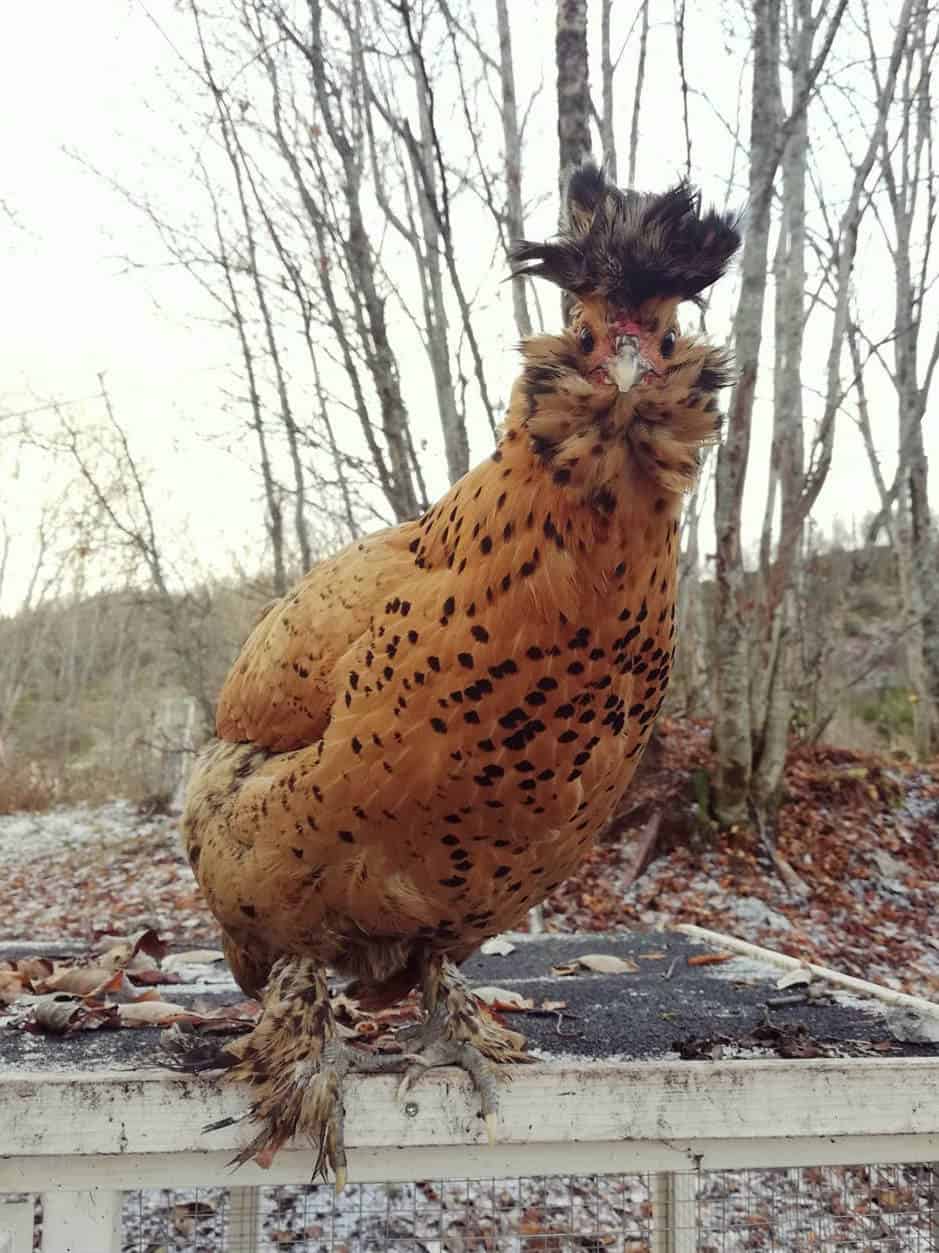
Pavlovskaya chickens have a very distinct and elegant appearance. Once you see one, it will make a striking impression that won’t be easy to forget. They are regal, lively, and captivating in appearance.
Distinctive Features
The Pavlovskaya chicken also has other distinctive features, including a rounded, feathered head that can move up to 180 degrees.
It also has a crest that is shaped like a helmet, dark-colored legs that are feathered on all sides like a grouse, a small comb and earlobes, and a compact body.
This breed is generally on the small side, typically having yellow or black eyes. Their tails steal the show, though. These are variegated and perfectly display the beautiful colors that make this breed notable.
Here is a video of Pavlovskaya chickens in different color varieties:
The Russian Standard of Perfection
Pavlovskaya chickens are held in high regard in Russia because they follow a rigid standard for authenticity. They are considered pure-bred chickens as befitted the Russian national breed.
These chickens are special because they were carefully monitored to prevent interbreeding with other chickens, resulting in an extremely pure and authentic line of chickens.
Pavlovskaya chickens were carefully selected and bred through techniques passed on from each generation of Russian poultry farmers to another.
The Russian Standard of Perfection was created in 1899 to devise a method of examining the standards for Pavlovskaya chickens. The standard for this breed were chickens that had the following colors:
- Silver
- Golden
- Black with a white crest
- Grey with a white crest
- White
Sometimes, the chickens may come speckled with different colors. Among these, the rarest possible color to have was the black Pavlovskaya chicken with a white crest.
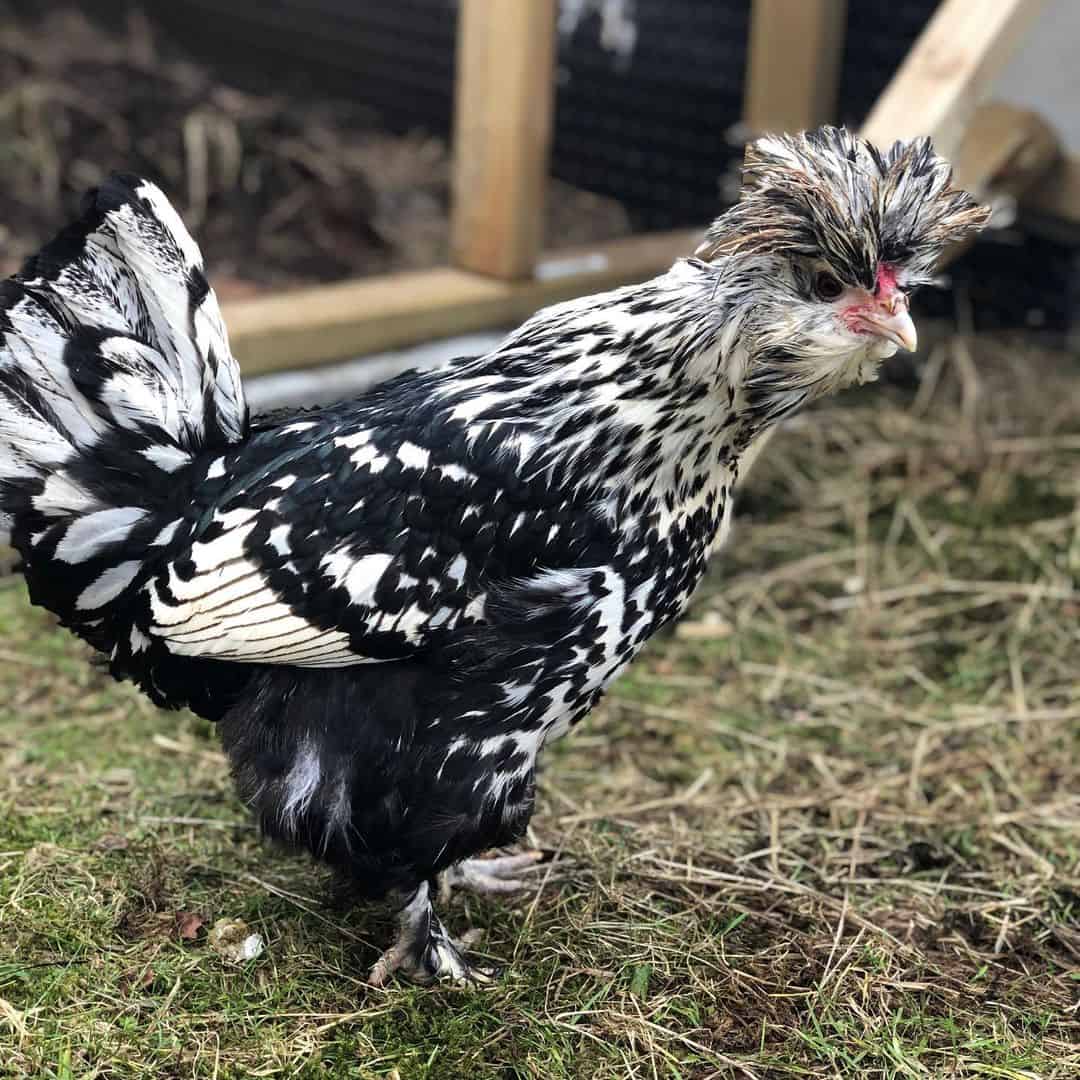
What is the Pavlovskaya Chicken’s Personality?
Pavlovskaya chickens are a joy to be around. They have a sweet disposition and are lively, preferring to be active and run around.
In fact, the hens can fly over obstacles, such as haystacks. They can even change their direction in the middle of flying
They are friendly to humans and are pleasant to be around. However, they have a regal nature that leads to fussiness.
Pavlovskaya roosters can be haughty and not inclined to socialize with other birds. The breed’s hens, on the other hand, are sociable enough and mingle well with others.
Their trusting nature will ensure that they don’t really feel the need to escape. As long as you give them what they need, these delightful chickens will stay in your coop happily.
However, as the roosters are given to fussiness and arrogance, it is considered best that they are isolated in the coop.
This breed, due to hailing from Russia, can withstand cold weather conditions. In fact, they are hardy enough to survive extremely cold climates.
Surprisingly, they are able to adapt to a wide range of temperatures. You don’t have to worry about the heat or the cold with these chickens. This breed is hardy and can withstand a variety of conditions.
Can the Pavlovskaya Chicken Produce Many Eggs?

These chickens aren’t exactly known for their efficiency in producing eggs, being more known as ornamental birds. Their value usually lies in their beautiful plumage.
One reason Pavlovskaya chickens are hard to come by is their egg-laying habits. They produce a relatively small amount of white or cream-colored eggs, usually weighing about 50 grams each. This ranges from about 70-90 eggs per year, leading to only about a hundred or fewer new chicks per year.
No need to worry, however. Pavlovskaya chickens are good mothers and can take care of their chicks with the right support.
Most of their chicks will successfully hatch and grow to maturity. In fact, mothers of this breed are sometimes used to ‘babysit’ or take care of eggs from other breeds.
Watch this video and see a Pavlovskaya hen lay an egg at 4:50.
Utmost Care for Their Eggs
Because there are so few of the Pavlovskaya breed, their eggs are rare and of the utmost value.
If a Pavlovskaya hen lays eggs, you should be sure to take care of it and ensure it hatches. The hen will also help you all the way.
Their maternal instincts will also help you greatly. Without these, it would be a greater ordeal to be able to breed them back to life.
As a matter of fact, it is because of this trait that they have been continuously brought back to life from near extinction for centuries. Their ability to care for their chicks well, despite only producing a small amount of them, has ensured their continued survival.
What Health issues Should I Look Out For?

Fortunately, Pavlovskaya chickens are pretty hardy and can resist most diseases and sicknesses. As mentioned before, they are also unbothered by cold climates and thus, will not suffer from any weather-related maladies.
There are still some diseases, however, that you should look out for if you are taking care of this regal chicken.
Marek’s Disease
When the herpes virus hits chickens, it leads to Marek’s Disease. Also called fowl paralysis, this affects the nerves and may even cause tumors to sprout in major internal organs.
You should especially protect young chickens as the disease mostly affects them. This causes paralysis as one of its main symptoms, and will most likely kill your chicken should they catch it.
Gumboro
Gumboro, or the Infectious Bursal Disease, is a contagious viral infection present in young chickens that essentially attacks the chicken’s immune system, causing it to fail.
This virus is extremely hard to decontaminate against, as they are able to survive a multitude of conditions.
Newcastle Disease
The Newcastle Disease virus causes this acute respiratory disease. Like the other diseases, the Newcastle Disease mostly affects young birds and can cause lesions.
How Do I Prevent This?
You can prevent this by feeding them properly to help boost their immunity. They should also be kept in an optimal environment where they are able to roam freely, as they are an active breed.
As the owner, seek your veterinarian to vaccinate your chickens against any possible diseases that may affect them.
This will greatly reduce the chances of their catching a life-threatening disease or infection that may affect the population of your Pavlovskaya chickens.
Three Tips for Raising Pavlovskaya Chickens

Taking care of Pavlovskaya chickens can be a daunting task at first, especially for those new to rare breeds. You will find them excellent companions and a gorgeous breed made all the more special by their rarity.
1. Give Them Enough Space
Pavlovskaya chickens love to run around and enjoy wide-open spaces. Therefore, it is necessary to provide them with more than a coop.
They should have a space where they can exercise and stretch their legs and beautifully colored wings.
2. Their Diet is Flexible
If you want your Pavlovskaya chickens to flourish, you need to make sure they have an optimal diet. However, they consume relatively small amounts of feed and are flexible. They should consume, on average, about 50 grams of feed each day.
Laying hens should eat grains, food sourced from animals, supplements, and vegetable mixtures. You should also feed them dairy such as milk, cheese, and yogurt.
During cold weather, they should have a diet of 1/3 solid food, with the rest being mashed.

3. Shelter Them From Too Extreme Temperatures
Just because they can survive in most temperatures, doesn’t mean you can just leave them willy-nilly. You have to provide shelter for them in cases of extreme heat or cold.
It’s bad for their health to leave them in temperatures below 10 degrees Celsius. Should it go below that, they should have a warm place to stay in, preferably with a heater. On the other hand, they should be left to roam outside if temperatures are extremely hot.
With these tips, you should be more guided as to how to take care of your chickens. Hopefully, you will enjoy the process and be beguiled by their beauty.
To Sum it Up Pavlovskaya chickens
An exotic and unique breed, the Pavlovskaya chicken is a rare species of its own. With the chicken breed’s origins lost to history but linked to mythology, it is perfect for poultry farmers wanting to try their hand in new things.
The Pavloskaya breed is mostly ornamental so don’t expect much egg-laying. However, when they do lay eggs, expect a beautiful set of hatchlings with exotic plumage. Because of their hardy nature, they can survive almost anything including cold climates. If you’re thinking of getting one today, here is your sign to do it now!
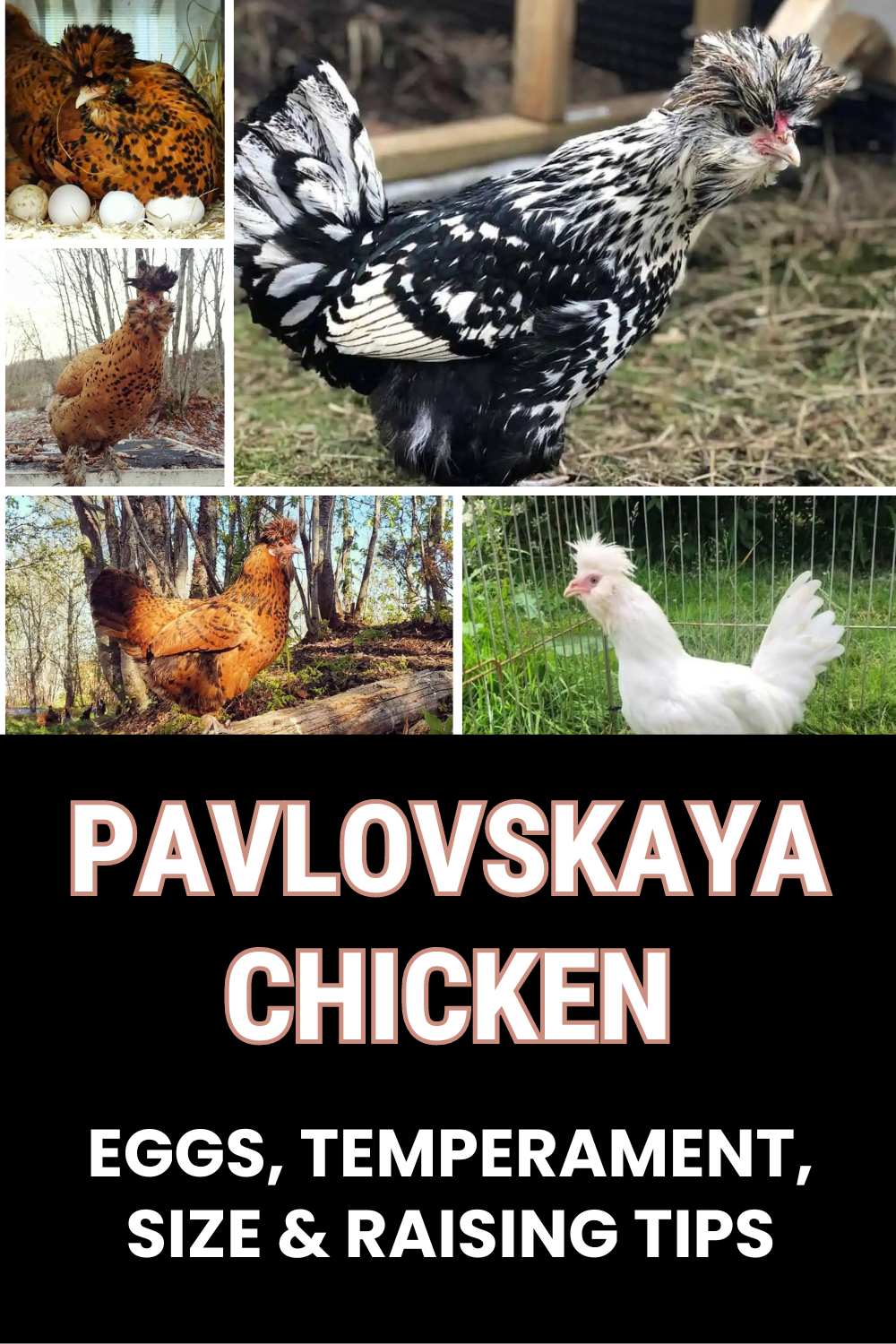

Joseph Hudson has been raising chickens for over 15 years. In 2018, he completed the Agriculture & Natural Resources program at Mt. San Antonio College. He currently raises over 1400 chickens on his 7.5-hectare farm. He keeps sharing his experience on raising healthy and happy chickens on Chicken Scratch The Foundry.
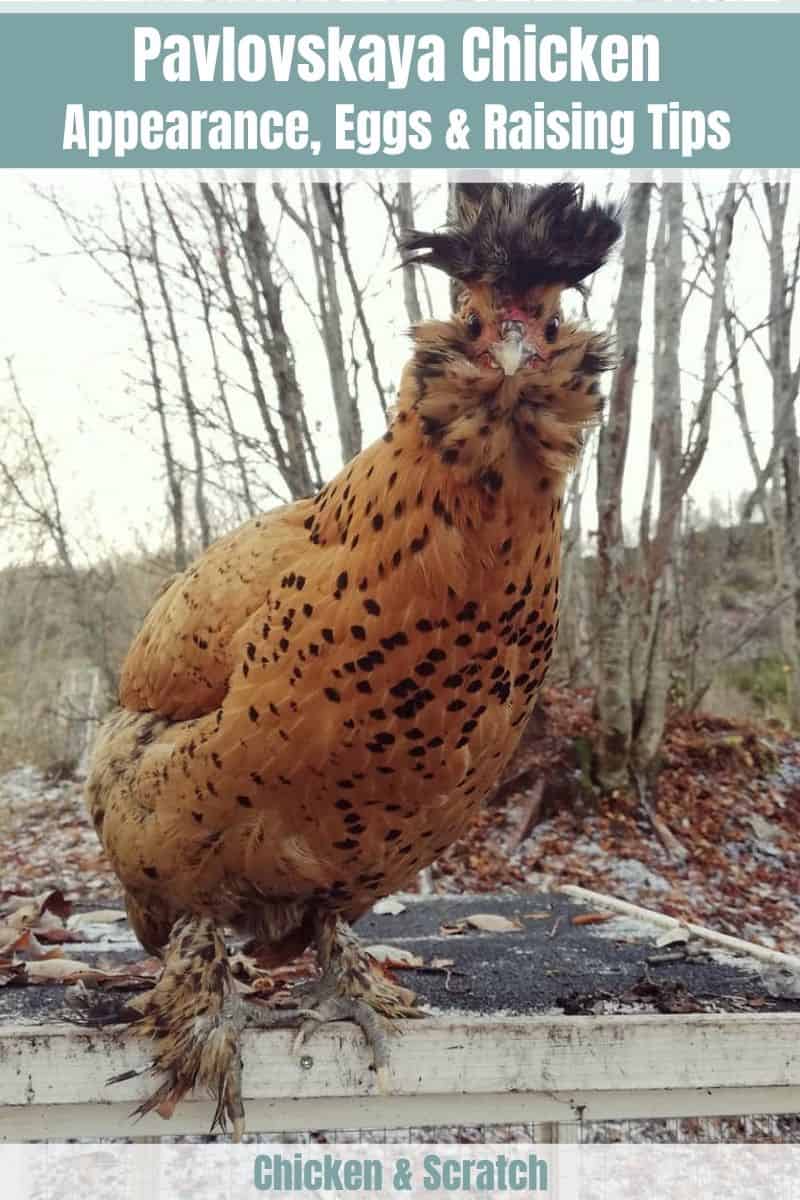







This was so informational. No mention of how much heat they can take? Any information will be helpful.